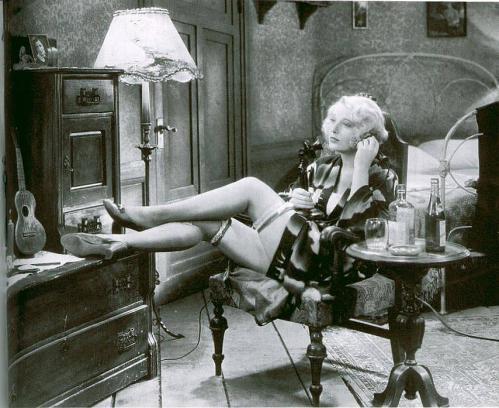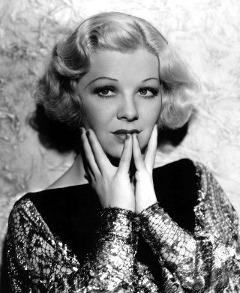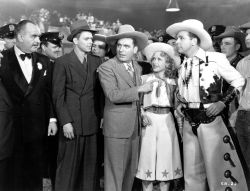A Guide to the
Interesting and Unusual on TCM
By Ed Garea
I’ve been thinking of a getting a t-shirt that only other
cinephiles will appreciate.
Lettered across the front will be “I Survived Summer Under the
Stars.” Another month has passed, and while there were some nice touches, such
as the Catherine Deneuve, Randolph Scott, and Glenda Farrell days, there were
just too many days of the same old stars with the same old movies. (For
instance, I love Humphrey Bogart, but he had a day back in 2011 as well as this
year. Henry Fonda, Bette Davis, and Clark Gable were all featured in 2009.) I
realize it’s the popular stars that garner the ratings, but the honchos at TCM
could add few more “wild cards” into the mixture.
For instance, how about Eugene Pallette, Walter Brennan, Lionel
Atwill, Aline MacMahon, and Miriam Hopkins from this side of the ocean? I know
some of these may have been featured in past years; the list of those featured
each year tends to become a blur. But all have been in films that are rarely,
if ever, screened, and thus, “must sees” for us. Deneuve and Jean Gabin
(featured in 2011) are a good start. Now, how about Michel Simon (a great actor
in his younger days who became the Grumpy Old Man of French cinema), Albert
Remy, Jeanne Moreau, Jean-Paul Belmondo, Arletty, Isabelle Huppert, and Simone
Signoret from France? Or Wolfgang Preiss, Gert Frobe (he did more than Goldfinger),
Maximilian Schell, Peter Van Eyck, Warner Peters, and Hildegard Knef from
Germany? Giuletta Masina, Anna Magnani, Vittorio Gassman, and Silvana Magnano
from Italy? There was a day dedicated to Toshiro Mifune in 2012, but how about
a day dedicated to Chishu Ryu, Setsuko Hara, or Takashi Shimura? And Joan
Greenwood, Dennis Price, Andre Morell, Peter Cushing, and Rita Tushingham from
England? I’m sure you readers can also fill in your own blanks as well. The
point I’m trying to make is that there is a load of potential for “Summer Under
the Stars,” so we film fanatics should have more to feast on rather than Davis,
Fonda, Katharine Hepburn, and Gable, all of whose movies always seem to be
readily available.
However, let’s get real. Gabin was the first to “cross” the line
and have a dedicated day back in 2011. In 2012, the designated foreign star was
Mifune, and this year it was Deneuve. It looks as if the foreign stars will be
limited to one per festival in the future, unless TCM gets a sudden burst of
creativity and breaks out of what seems to be a xenophobic state of mind.
Readers, let’s hear from you. Tell us who you
would like to see get a day on “Summer Under the Stars” and what films of his
or hers you’d especially like to see.
It’s September, and TCM is taking a different
direction. First, beginning
on September 1 and continuing for each Sunday in September is what TCM calls
“Sundays with Hitch,” a day’s worth of films directed by the Master. It doesn’t
matter how many times we’ve seen them in the past; we’re always up for another
showing. But rather than just leaving it with the popular films, they’re showing
some of Hitchcock’s lesser-known titles, including several silent features. If
you’re as much of a Hitchcock fan as I, then you’ll especially want to see the
lesser-known films. Watching Hitchcock is always a great way to spend the day.
On September 2, TCM premieres a 15-part documentary that aired on
BBC in 2011: The Story of Film: An Odyssey. Directed, written, and
hosted by filmmaker Mark Cousins, the documentary follows the history of film
according to Mr. Cousins. I haven’t seen it, but from what I’ve read, viewer
criticism of the series on IMDB ranges from Great to Awful. Below is a small
sample:
Don’t Miss This: I'm just enjoying my second voyage into film
with the excellent Mark Cousins. Don't pay any heed to the criticisms of his
narrative style, and his Ulster brogue; the only reservation I would have on
that score is that sometimes I get so transported by his seductive tones, that
I stop listening to what he is saying and just get transported by the sound of
his voice (bit like Alistair Cooke).
Beyond Dreadful: However technical failings would be
excusable if Mr. Cousins had anything interesting or insightful to say. He does
not. He rambles on in pretentious half-sentences that frequently mean nothing.
He jumps between decades without reason or meaning, moving from 1912 to 1928 to
1915 and back again, preventing any coherent narrative forming. He also leaves
out key information; he joyfully tells us that women were heavily involved in
film-making in the early years (half of all script writes from 1910-1935
apparently) without telling us why.
Me? Oh, I’ll be watching regardless. I’m a sucker for
documentaries on film history, having cut my teeth in high school on the
excellent PBS series The Men Who Made the Movies. They don’t get any
better than that one, so we’ll see.
The real treat, however, is the panorama of world cinema shown by
TCM in conjunction with the documentary series. On September 2, TCM shows a
collection of Thomas Edison and Georges Melies silent movies. Oh yeah? So what,
they’ve been on before. Don’t judge the middle by the beginning. By the time
this really gets going later in the month, some of the choices will astound and
delight you. By September 17 it really gets rolling, unless they alter the
schedule. The highlight is one you’ll have to record, owing to it late slot:
Kenji Mizoguchi’s wonderful Osaka Elegy (1936), a look at the
oppression of women in prewar Japan. Let’s hope they don’t dump this one.
The trouble with scheduling is the last-minute changes the station is always
making. Again, with regard to the recently concluded Summer Under the Stars,
August 31, the day featuring Rex Harrison, had his wonderful thriller Escape scheduled.
The last I looked (this column is being written on August 30), TCM has substituted
the Harrison–Vivien Leigh–Charles Laughton opus St. Martin’s Lane aka Sidewalks
of London. It’s a good film; only I’ve seen it about five times already,
whereas I haven’t seen Escape in years and years. Looking
ahead to next month, TCM has scheduled I Am Curious (Yellow) at
3 am on October 15. If they don’t replace it with another film, I’d be very,
very surprised. I remember earlier, when they had Fritz the Cat scheduled
in a late-night slot. I remember saying to myself that they can’t really be
showing this because, though animated, it truly deserves its “X” rating. And I
was right; they substituted another film in its place as the day drew closer.
The Star of the Month for
September is Kim Novak. Among the 16 featured films being shown are those we’ve
seen time and gain, but can always watch (Vertigo, Picnic);
some we’ve seen once and once is enough (Jeanne Eagles, Of Human
Bondage); and those we haven’t yet seen that are worth a peek (Five
Against the House, directed by Phil Karlson). Plus, as a bonus, TCM is
airing one of Kim’s real bombs – in fact, one of the all-time bad movies – The
Legend of Lylah Clare. It’s one of my guilty pleasures. Reportedly Moreau
was offered the lead, but she took one look at the script and got the hell out
of Dodge; one of her better career moves. So Kim signed on after a three-year
absence, proving that absence does not necessarily make the heart grow fonder.
Other Highlights:
September 4: Bob’s Picks – These include Captain of
the Clouds (1942), The Black Swan (1942), You’ll
Never Get Rich (1941), Dance, Girl, Dance (1940), and Holiday
in Mexico (1946).
September 11: Guest programmer Madeline Stowe, who picks The More
the Merrier (1943), Splendor in the Grass (1961), The
Bicycle Thief (1948), and I Confess (1953).
Fridays: Future Shock – A collection of sci-fi films
about the future, usually dystopian. Among the gems being offered are Metropolis (1927),
Things to Come (1936), Brazil (1985), Minority
Report (2002), A.I.: Artificial Intelligence (2001), Total
Recall (1990), World Without End (1955), The Omega
Man (1971), and A Boy and His Dog (1974).
Films Worth Your Time: September 1–September 7
September 1
1:43 am – The Devil’s Cabaret (MGM, 1930): Eddie Buzzell, Charles
Middleton. A seldom seen two-strip Technicolor short about the establishment of
a nightclub by the Devil’s assistant to get people to go willingly to Hades.
Buzzell later gravitated from acting into directing.
September 5
10:45 am – The Office Wife (WB, 1930): Dorothy Mackaill, Lewis Stone,
& Joan Blondell. Gold-digging secretary MacKaill lures boss Stone away from
his straying wife. Lewis Stone?? Oh, well. Blondell steals the flick as
Mackaill’s sister who always seems to be in some form of undress. (It is
Pre-Code, you know.)
September 6
2:15 am – Brazil (Universal, 1985):
Jonathan Pryce, Robert De Niro, & Michael Palin. Director Terry Gilliam’s
dark satire about a timid, daydreaming clerk in a future bureaucratic society
who finally meets the girl of his dreams, but then the lovers find themselves
fingered as terrorist bombers because of a bureaucratic error.











